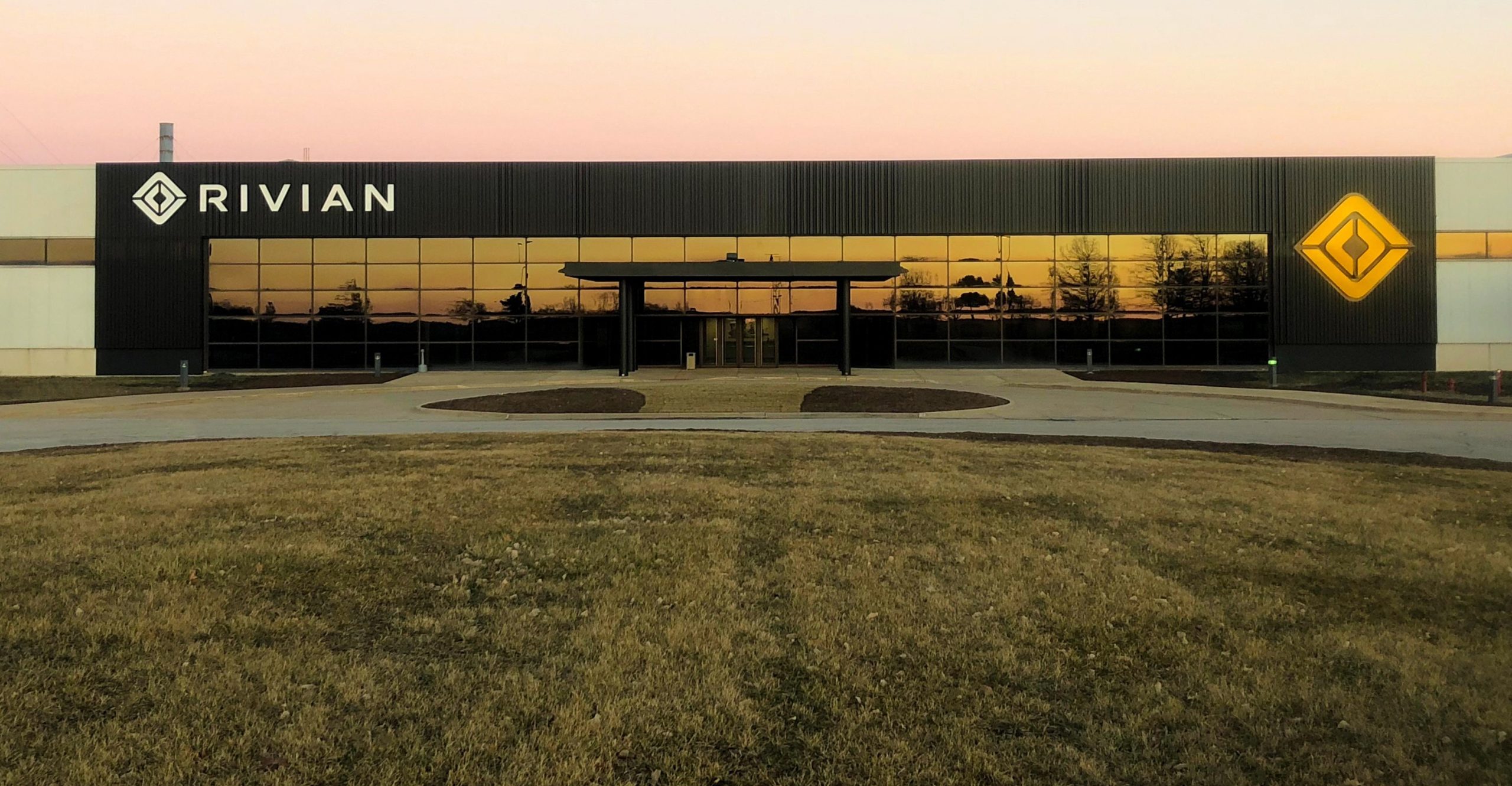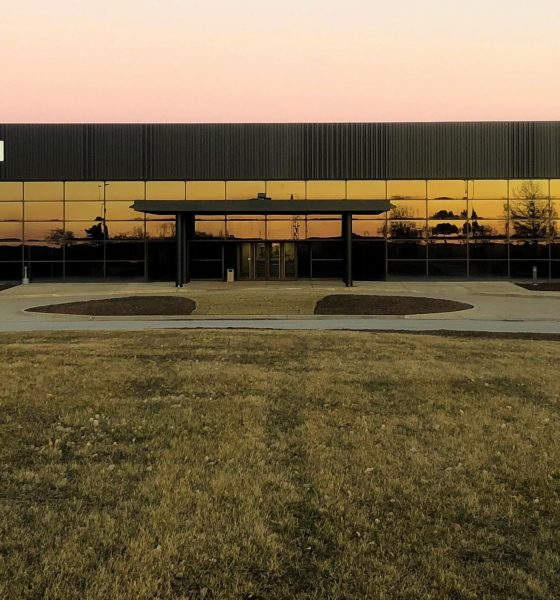

News
Rivian’s home town is renaming a street in honor of its electrification efforts
The city of Normal, Illinois, home to Rivian’s main manufacturing facility, is to preparing to remove one of the last reminders of its previous automotive tenant in favor of the all-electric car maker’s business interests in the area. A stretch of highway leading to the company’s plant named Mitsubishi Motorway will be renamed to Rivian Motorway if all goes well with the city councils and county board involved in granting the final approvals for the change.
Rivian specifically requested the changes, according to a memo written by Assistant City Manager Eric Hanson to the Normal City Council. “Obviously, it’s not necessarily advantageous for them to bring (potential investors) down Mitsubishi Motorway,” he said. “This is very business driven, and we fully understand that and are supportive of helping them with a name change.” A second road for access to Rivian’s factory is also planned for renaming, citing the same reasons – Sakura Lane will be renamed to Electric Avenue.

Rivian bought their factory headquarters from Mitsubishi in 2017, and efforts are currently underway to transition from a traditional auto manufacturing process to the electrified lineup they have in the works. Many of the workers currently involved in the changeover process were part of the original Mitsubishi team that opened the factory when it was new. Driving these moves are Rivian’s R1T pickup truck and R1S SUV set to debut in 2020, so it’s expected that the company will continue to make further changes that align with its business interests.
The city of Normal has welcomed Rivian’s decision to set up shop in the area and has even offered significant incentives for the car maker to continue investment and development of their operations. Specifically, these include a $1 million dollar grant from Normal for investing $20 million within five years, property tax abatement, and almost $50 million dollars in state tax credits for creating 1,000 jobs over 10 years. Renaming two streets directly connecting to Rivian’s facility only seems like a natural progression considering the company’s current relationship with its manufacturing headquarters.
Along with renovating its factory, Rivian is taking care to address some pitfalls other electric car makers have had to struggle through. “So, we’re spending a huge amount of time solving service,” CEO RJ Scaringe revealed in a recent interview. His comment was in response to a question on how the company plans to address concerns such as parts and service backlogs that have plagued Rivian’s electric car brethren, namely Tesla. Scaringe has also taken positive lessons from its competitor. “[Tesla] showed people that an electric car can be exciting and fun,” he acknowledged while at the Automotive News World Congress.
Overall, it’s certainly not surprising for Rivian to start asserting itself in its local area. This is especially true when considering advantages Mitsubishi enjoyed during its tenure in Normal. The next steps for the company could be to successfully petition lawmakers to allow direct sales in one of its desired markets, Colorado, and perhaps look for a domino effect to achieve that same feat in Texas and elsewhere.

News
Tesla FSD fleet is nearing 7 billion total miles, including 2.5 billion city miles
As can be seen on Tesla’s official FSD webpage, vehicles equipped with the system have now navigated over 6.99 billion miles.

Tesla’s Full Self-Driving (Supervised) fleet is closing in on almost 7 billion total miles driven, as per data posted by the company on its official FSD webpage.
These figures hint at the massive scale of data fueling Tesla’s rapid FSD improvements, which have been quite notable as of late.
FSD mileage milestones
As can be seen on Tesla’s official FSD webpage, vehicles equipped with the system have now navigated over 6.99 billion miles. Tesla owner and avid FSD tester Whole Mars Catalog also shared a screenshot indicating that from the nearly 7 billion miles traveled by the FSD fleet, more than 2.5 billion miles were driven inside cities.
City miles are particularly valuable for complex urban scenarios like unprotected turns, pedestrian interactions, and traffic lights. This is also the difference-maker for FSD, as only complex solutions, such as Waymo’s self-driving taxis, operate similarly on inner-city streets. And even then, incidents such as the San Francisco blackouts have proven challenging for sensor-rich vehicles like Waymos.
Tesla’s data edge
Tesla has a number of advantages in the autonomous vehicle sector, one of which is the size of its fleet and the number of vehicles training FSD on real-world roads. Tesla’s nearly 7 billion FSD miles then allow the company to roll out updates that make its vehicles behave like they are being driven by experienced drivers, even if they are operating on their own.
So notable are Tesla’s improvements to FSD that NVIDIA Director of Robotics Jim Fan, after experiencing FSD v14, noted that the system is the first AI that passes what he described as a “Physical Turing Test.”
“Despite knowing exactly how robot learning works, I still find it magical watching the steering wheel turn by itself. First it feels surreal, next it becomes routine. Then, like the smartphone, taking it away actively hurts. This is how humanity gets rewired and glued to god-like technologies,” Fan wrote in a post on X.
News
Tesla starts showing how FSD will change lives in Europe
Local officials tested the system on narrow country roads and were impressed by FSD’s smooth, human-like driving, with some calling the service a game-changer for everyday life in areas that are far from urban centers.

Tesla has launched Europe’s first public shuttle service using Full Self-Driving (Supervised) in the rural Eifelkreis Bitburg-Prüm region of Germany, demonstrating how the technology can restore independence and mobility for people who struggle with limited transport options.
Local officials tested the system on narrow country roads and were impressed by FSD’s smooth, human-like driving, with some calling the service a game-changer for everyday life in areas that are far from urban centers.
Officials see real impact on rural residents
Arzfeld Mayor Johannes Kuhl and District Administrator Andreas Kruppert personally tested the Tesla shuttle service. This allowed them to see just how well FSD navigated winding lanes and rural roads confidently. Kruppert said, “Autonomous driving sounds like science fiction to many, but we simply see here that it works totally well in rural regions too.” Kuhl, for his part, also noted that FSD “feels like a very experienced driver.”
The pilot complements the area’s “Citizen Bus” program, which provides on-demand rides for elderly residents who can no longer drive themselves. Tesla Europe shared a video of a demonstration of the service, highlighting how FSD gives people their freedom back, even in places where public transport is not as prevalent.
What the Ministry for Economic Affairs and Transport says
Rhineland-Palatinate’s Minister Daniela Schmitt supported the project, praising the collaboration that made this “first of its kind in Europe” possible. As per the ministry, the rural rollout for the service shows FSD’s potential beyond major cities, and it delivers tangible benefits like grocery runs, doctor visits, and social connections for isolated residents.
“Reliable and flexible mobility is especially vital in rural areas. With the launch of a shuttle service using self-driving vehicles (FSD supervised) by Tesla in the Eifelkreis Bitburg-Prüm, an innovative pilot project is now getting underway that complements local community bus services. It is the first project of its kind in Europe.
“The result is a real gain for rural mobility: greater accessibility, more flexibility and tangible benefits for everyday life. A strong signal for innovation, cooperation and future-oriented mobility beyond urban centers,” the ministry wrote in a LinkedIn post.
News
Tesla China quietly posts Robotaxi-related job listing
Tesla China is currently seeking a Low Voltage Electrical Engineer to work on circuit board design for the company’s autonomous vehicles.

Tesla has posted a new job listing in Shanghai explicitly tied to its Robotaxi program, fueling speculation that the company is preparing to launch its dedicated autonomous ride-hailing service in China.
As noted in the listing, Tesla China is currently seeking a Low Voltage Electrical Engineer to work on circuit board design for the company’s autonomous vehicles.
Robotaxi-specific role
The listing, which was shared on social media platform X by industry watcher @tslaming, suggested that Tesla China is looking to fill the role urgently. The job listing itself specifically mentions that the person hired for the role will be working on the Low Voltage Hardware team, which would design the circuit boards that would serve as the nervous system of the Robotaxi.
Key tasks for the role, as indicated in the job listing, include collaboration with PCB layout, firmware, mechanical, program management, and validation teams, among other responsibilities. The role is based in Shanghai.
China Robotaxi launch
China represents a massive potential market for robotaxis, with its dense urban centers and supportive policies in select cities. Tesla has limited permission to roll out FSD in the country, though despite this, its vehicles have been hailed as among the best in the market when it comes to autonomous features. So far, at least, it appears that China supports Tesla’s FSD and Robotaxi rollout.
This was hinted at in November, when Tesla brought the Cybercab to the 8th China International Import Expo (CIIE) in Shanghai, marking the first time that the autonomous two-seater was brought to the Asia-Pacific region. The vehicle, despite not having a release date in China, received a significant amount of interest among the event’s attendees.








